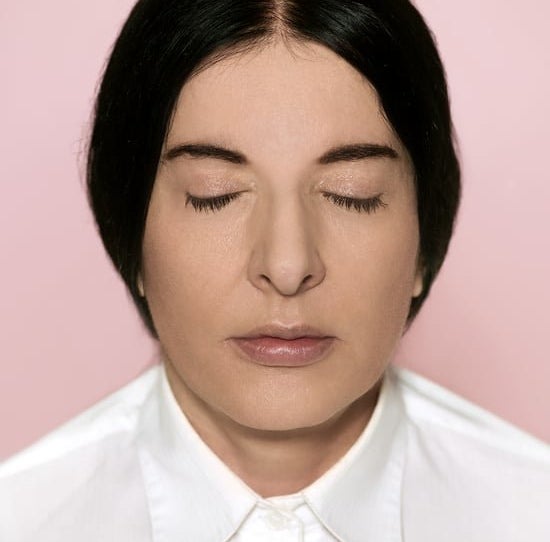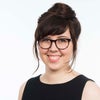
Marina Abramović, the godmother of performance art, recently celebrated her 70th birthday at New York’s Guggenheim Museum by asking party guests to remain silent for 70 minutes. This is not unusual coming from a woman famous for, among many, many other feats, silently staring at Museum of Modern Art patrons for a modest 700 hours total.
The party happened not long before Abramović released her recent documentary, “Marina Abramović in Brazil,” which follows the artist throughout the South American country in a dramatic search for spiritual enlightenment. As she encounters shamans and psychic surgeons, dabbling in ayahuasca trips and crystal treatments, she is ― as she admits early on in the film ― attempting to mend a broken heart.
“I was very much down and looking to heal,” she explained in a Skype interview with The Huffington Post just after turning 70.
Abramović has faced sharp criticism this year ― backlash erupted after she compared Aboriginal Australians to dinosaurs in her memoir; supporters of American President-elect Donald Trump came across her work and accused her of being a “spooky occult” leader. Some reviewers took issue with her latest film, too. “Frankly, she sometimes looks like a dilettante whose money and connections allow her to dabble in a dozen cults without giving herself fully to any of them,” John DeFore wrote for The Hollywood Reporter.
Ahead of her film’s December release ― it’s now available to stream via Vimeo ― Abramović insisted she, just like every one else, is just trying to figure out how to stay creative decades into her career. In a conversation with HuffPost, she explained how far she was willing to go to sustain her artistic drive:
In the film, you said that you like to work in the “space in between” ― a sentiment echoed in the title of the film. How do you define the “space in between”?
The space in between is the space when you leave your home and you leave the security of your home [...] before you arrive at some other place. The space in between is when you are open to destiny. Anything can happen. It’s really the space where things can happen. Most of the time we think in the box. We live in the box. We surround ourselves with the things that are known to us. But when you leave the security and you enter into someplace else, that space is the most creative space of all.
Do you associate this with a lack of control?
Mmmm, yes. In my manifesto, I said [...] it’s really important to not have any control over your life and to have total control over your work. This is really important because the moment you control your life, you experience the same problems, the same patterns over and over again. But the moment you actually lead your life fully, things can just happen and you recognize the opportunities and you live it intuitively and with heart. Then somehow the life takes you like a river to the right places and the right things. When it comes to work ― you control the work. But when it comes to life ― the space in between is key.
What drew you to Brazil in particular for this journey?
You know, I’ve been in the space in between all my life. I lived in the Australian desert, I’ve lived in the retreats with Tibetan monks, I’ve lived months in the jungle. But I’ve never actually recorded these experiences, except in my diaries. But not in a film recording. This time [...] it was interesting to study [Brazilian] shamanism. I didn’t know much about it; how shamans relate to nature, their spiritual energy. So I wanted to learn from them. And a way to learn from them is to actually go there myself and understand what they’re talking about.
I was also drawn by the very personal problems I had ― my broken heart. I was very much down and looking to heal. But not only in this journey did I find healing, I found a new way to make work. I wanted to share all this. Somebody asked me, “Why do you put everything private outside of yourself?” Because to me, I don’t do privacy. My work and my art and my life is all out there. That’s just how it is. I also want to be inspirational. If I can go through this hell, then you can too.
One of the questions that appears in text in the trailer for “The Space in Between” reads: “How far will she go to create a new work of art?” Which brings up two ideas. First, that this trip was, in itself, a sort of test of endurance, a common aspect of your work. And second, that there was almost a sense of desperation to your creativity ― you were not only willing to push your limits, but you needed to in order to push your creativity forward.
I was in a very different state. I really was broken-hearted. You know, a broken heart is almost a disease. It’s true ― I don’t know if you’ve been broken-hearted, but probably every woman has. You get sick. You are sick in your stomach and you can’t think about anything else. You’re tired of talking to your friends about the problems, you’re tired of talking to yourself. You wake up in the morning and you cry, you cry in your dreams. I wanted to see how I could heal. And I did, I really healed. And not only that, but I found new ways to do the work. The way out is really to look into yourself, deeply.
During your travels there, did you acknowledge yourself as an outsider observing the practices of indigenous cultures, or did you take a different approach?
I take a different approach. When I went to live with aborigines in Australia for one entire year, it’s not tourism. One way to understand a culture is to go inside that culture. And not to be on the periphery. It was a funny story about John of God ― who you see in the beginning of the movie. He said to me, “I don’t know if we can film this. I don’t know if this spirits will say yes.” I said, “What do you mean?” He said, “I am just a man. I am a tool of the spirits.” So I had to wait there for 10 days until the spirits said yes, it was OK to film. And then I was able to watch this eye operation, and it was terrible, but it worked. These people were healed.
This is where the rational mind stops. You don’t understand. How is this possible? We are so interested in science and technology, because Western culture works differently. I was interested in putting myself in situations where I could see what works in other cultures. Not in a tourist way, but really take part in it. My ayahuasca experience was terrible. I lost my mind. It was such hell for me. But I went through the experience because it’s the only way to understand.
In past projects, you’ve definitely interacted with scientists and been on the more rigid scientific side of things. Do you ever grapple with these two approaches ― the scientific approach and the spiritual approach, that sort of lacks rationale?
There are two types of knowledge: scientific knowledge and spiritual knowledge. Spiritual knowledge is based on intuition, and scientific knowledge is based on proof. And both types of knowledge are important. Because spirituality already knows things exist. But science always needs time to prove it. We know certain things exist, but we don’t see them ― they’re invisible. Science finds the tools to say it’s true. But it needs time. Artists also work intuitively, while scientists deny intuition. So we need both. Now, there is more and more collaboration between the two. That’s why we’re going to be able to develop faster than ever before.
Do you personally elevate spiritual approaches over scientific approaches?
You know, I relate more to the spiritual approach, because I work more with the heart. The more you put your heart into your work, the more you rely on intuition, the closer to truth you are.
In the film, you also mention that you hope to “raise consciousness through art.” Do you ever worry that your art ― for whatever reason ― isn’t reaching the people who perhaps would benefit most from consciousness-raising? That maybe the art world has become so insular, that you’re already speaking to people whose consciousness has been, for lack of a better phrase, raised already?
I don’t think that way. I only think about how much I can contribute to the situation we’re living in right now. It’s still a disaster. We still have poverty, we still have wars, people killing each other. But it’s always been like this. Every century has been a mess. But it’s really important ― how you can contribute to society on your own. The only way I can contribute... I’m always talking about this 120 percent. One hundred percent is not enough. This extra 20 percent that you have to give makes a difference. My motto is very simple: I have to change myself. If I change myself, I can change thousands. You have to start with yourself. The answer doesn’t come from anybody else.
I have to say, in the early ‘70s, [my public] was 10, 20, 30 people. Now it is hundreds and hundreds of people. Just now, in Greece, my institute asked people to come to a square and 3,000 people came. It was an incredible experience. So that is some kind of connection. My work is very emotional; emotions are what I give to people. And it has nothing to do with celebrity, it has to do with the fact that I give them something to open their hearts. It’s never enough. But at least I’m trying.
Your work was recently misinterpreted by Trump supporters in the U.S. Do you feel as though you, as the artist, have a responsibility to correct or even just reach out to those people who see your work and take it as, for example, “occult magic” instead of what you intended it to be?
I have given several interviews about this ― on my own birthday, my 70th, which was several days ago. I was sitting here in the office and was answering questions for hours on Tumblr. Exactly to give some clarity. There is so much ignorance. People don’t know about the context around the work. For me, it’s very painful. I am receiving frightening responses. I’m really having a problem with it because it’s such a misinterpretation. It’s like, what? People ask me, “Are you killing children and sucking their blood and putting it as Botox in your face to look so young?” It’s incredible. I’m really shocked. It brings such negativity to my work. I really want this to disappear as soon as possible. It’s been hell.
